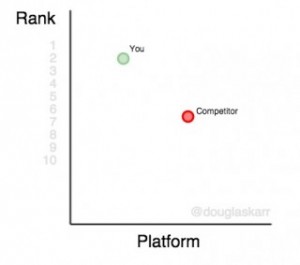
Many factors influence the market; retailers who do not want to be left behind should carefully monitor trends and develop strategies for responding to and taking advantage of any opportunities they may present. Because retailers, generally speaking, have a finite geographical limitation, it’s actually easier for them versus E-tailers to conduct routine market research to help their businesses perform better. For instance, it’s important to track…
The local economy. Pay attention to patterns in the community such as employment, closings, strikes and adjust accordingly. Any changes in the purchasing patterns of your customers, requires action by making adjustments to satisfy their needs so that they continue to stay loyal to you.
Who is living in your area. Collect and analyze demographics and data (which you can gather from your local government) such as age, sex, singles/marrieds, size of families, income, interests, nationalities, language spoken, education, and more information about the surrounding population. This gives you an idea of what to sell, hours, and how to promote the store.
Your competition. Gain knowledge on stores operating in your area with emphasis on those closest to your business. This should include their programs, merchandise, and policies so that you can compare them to yours. This will enable you to identify their weaknesses and make them your advantages.
Obtaining this Data
1. Existing demographic and statistical information is readily available at no cost from the federal government and state and municipal government agencies, as well as local business organizations. Most federal government data can be obtained online through census.gov or factfinder.census.gov. Identify areas where you should be marketing your store, this process is beneficial for expansion.
2. Advertising departments of local newspapers, radio and television stations, cable systems, city magazines, and companies selling transit advertising are good sources for data. Ask for their media kit, used for potential advertisers to learn about the targeted audience.
3. Implementing customer questionnaires are generally used when want specific information from your customers such as their likes and dislikes, buying patterns, and personal demographics. If you have a customer mailing list, use it (via email or snail mail). The questionnaires can also be given out in stores and in conversational tone. Staff can ask customers questions like “Is there any product you would like to see added?” and more, after the customer is out of sight jot down the answer to collect information. Customers should not be aware that you are collecting this information so that answers are valid and genuine. Lastly, you can always put one in their bag as they’re checking out, explaining its purpose. But be sure to include a SASE/postcard for them to mail back to you. You also may want to include an incentive for filling it out, such as “Once we receive the completed questionnaire, we will mail/email you a coupon for 25% off your next purchase”.
Please stay tuned for next week’s installment of Small Business Retail Strategies for Success: Developing Marketing Strategies and feel free to contact me to explore how I may be able to assist your small business succeed.
Marketing Land – Internet Marketing News, Strategies & Tips
(23)
Report Post






